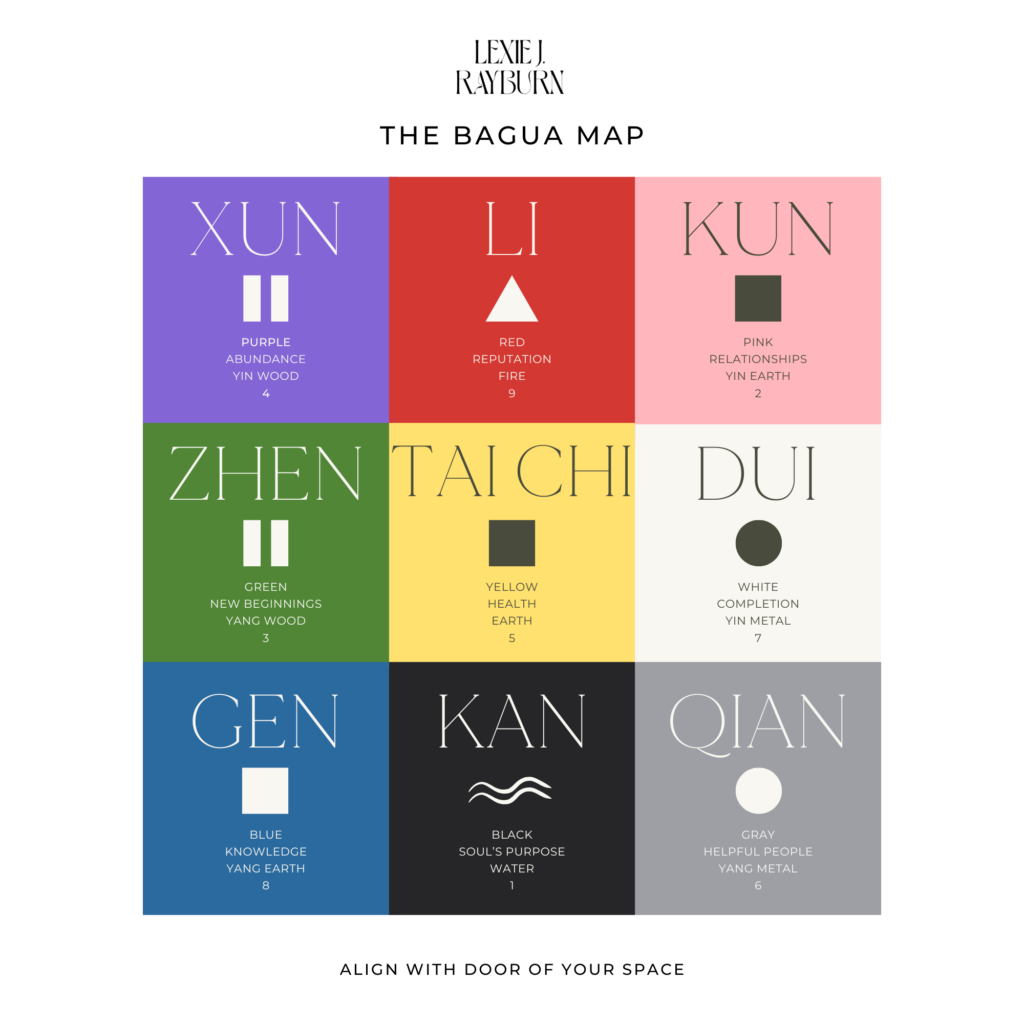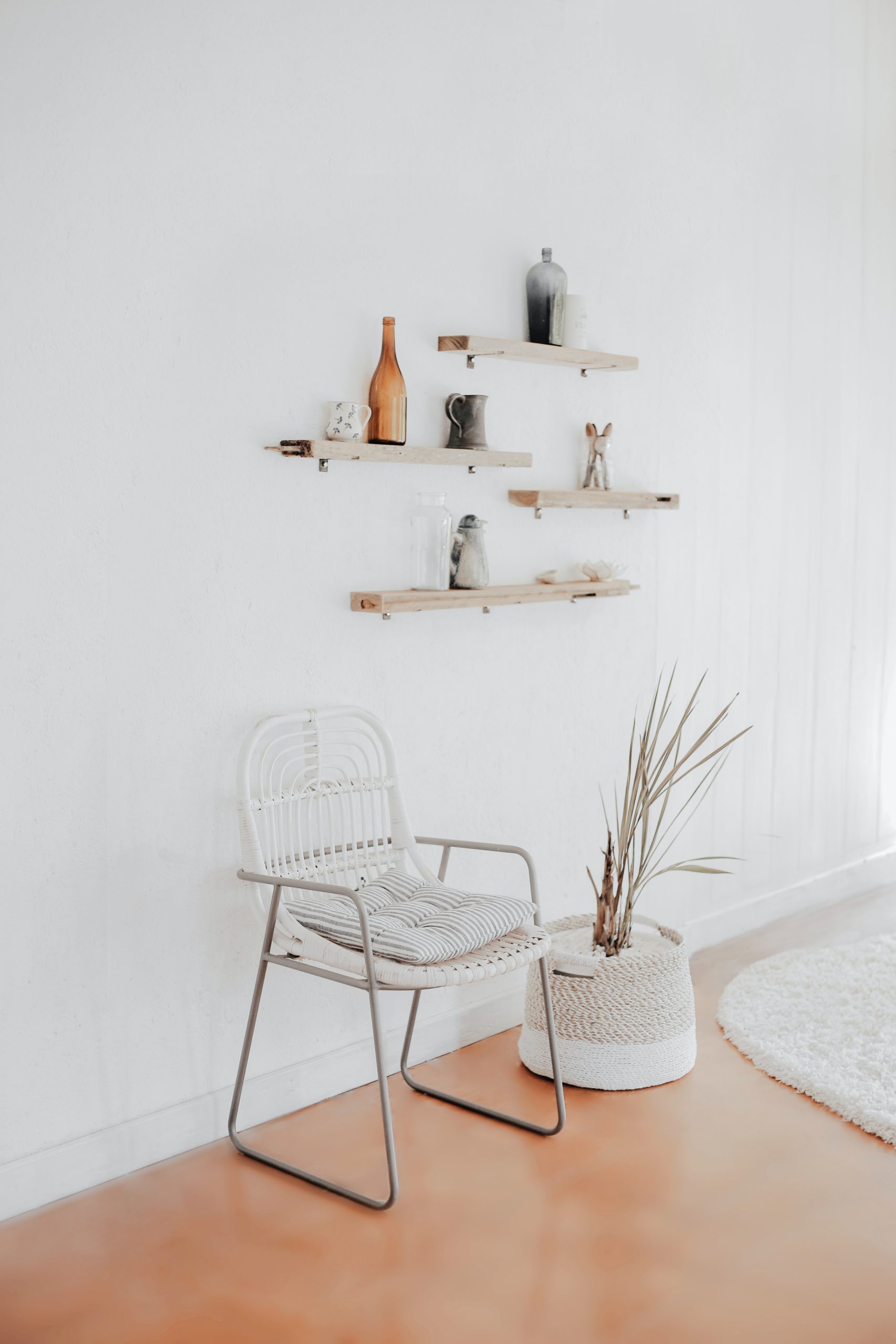What is Feng Shui? Part Two.
In Part One of, “What is Feng Shui?” we discussed a fundamental piece of Feng Shui – mindfulness and intention. In Part Two, we’ll talk about the Feng Shui bagua and how to apply it to your space.
The Feng Shui Bagua
The Feng Shui bagua is an energy map that is used as a method of understanding how energy – or chi – flows within a space. While there is a bit of mysticism to this practice, the bagua can be used as a guide for interpreting a person’s life situations, as well as offer adjustments to tip positive energy flow in their favor.
The bagua is often depicted as an octagonal shape surrounding the Yin and Yang symbol in the center. You can also find images of it like the one below – as a grid of eight “guas” around the center, or Tai Chi. Each area represents a color, shape, number, time of year, element, body part, and situation in a person’s life.
For example, Zhen is the color green, columnar shapes, the number three, springtime, the wood element, the feet, and represents “new beginnings” and family.
The Bagua

How to use the bagua
In Black Sect Feng Shui (BTB Feng Shui), the bagua is used differently than in other practices like compass Feng Shui. While all versions are valid, in BTB Feng Shui we align the bagua with the mouth of chi (for example, a front door) because this is where energy enters the space. It can be applied to homes, rooms, plots of land, and even pieces of furniture.
To apply the BTB bagua to your home, lay the grid over your floor plan with the front door at the bottom of the map. When placed correctly, your front door will be in either Gen, Kan, or Qian. This means the back right corner of your home will be your relationships gua, or Kun. And, the top left corner of your home will represent your wealth gua, or Xun.
Sometimes this means that the general shape of the bagua will not remain a square like the one above, but become a rectangle. This is okay as long as every gua is equally sized and spaced. Note that if your home is not a perfect square or rectangle there may be missing areas of your home, or even extensions that fall outside of the bagua.
If you do not have a floor plan of your home, you can apply the bagua to a single room by aligning the door that enters the room with the bottom of the bagua map. Or, you can even apply the bagua to a piece of furniture like a desk. In this case, you would apply the bagua with Kun, or the career area, in the bottom center of your desk where you sit.
Once you have appropriately placed the bagua on your space, then you can start making mindful adjustments to bring energy to any particular gua that you want to focus on.
While this seems simple enough, there are plenty of nuances that make hiring a Feng Shui consultant conducive to getting the results you desire. We’ll dive deeper into each gua in future blog posts, however if you cannot wait to start using this practice in your space I am available to answer questions.*
And, stay tuned for Part Two of the bagua series to learn how to make adjustments in your space.
Want a little bit more?
Stay tuned for practical, accessible tips to implement Feng Shui in your home by joining the Club Haven Newsletter, and following along on social media @HolisticHavens.
Have more specific questions? Feel free to contact me.

[…] –What is the Feng Shui Bagua? […]
[…] in a certain color like hues of red, which represent being seen/reputation/fire energy in the Feng Shui Bagua. This may reflect on a personal level something related to you being recognized at work or in your […]